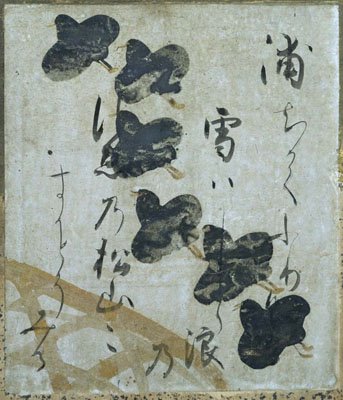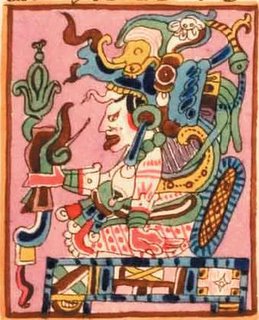
Tawaraya Sotatsu (17th century died 1643) is in my opinion one of the great artists of the world and above is a small section of a folding screen produced by him. The image comes from the
Tokyo national museum which is a shining example of providing worldwide access via the interent to high quality pictures of it's collection. Compared to the pathetic efforts of british museums it is amazing.
If you want to download a larger version of the above picture of get your hands on other pictures of the screen go to:
http://www.tnm.go.jp/jp/gallery/material/film/index.htmland in the lowest section of the search form (フィルム番号 in japanese) there are two boxes with C in from of them. In the left hand box type: 0028941 and then press the search button (containing red text). That should take you to a results page and clicking the top link will take you to the above image.
If you want to search for the artist return to the
search page and copy and paste this: 俵屋宗達
into the third box from the top (labelled 作者). The best images of the screen start at C28931.
needless to say Sotatsu is not the only artist in the collection try searching for:
ogata korin: 尾形光琳
hasegawa: 長谷
koetsu: 光悦
liang: 梁
Tosa mitsunobu: 土佐光信
kuniyoshi: 国芳
Suzuki Kiitsu: 鈴木其一
Some Sotatsu links:
http://www.clevelandart.org/Explore/artist.asp?artistLetter=S&recNo=218http://www.metmuseum.org/toah/ho/09/eaj/ho_1975.268.59.htmhttp://www.japanese-arts.net/painting/schools_rinpa_sotatsu.htm



